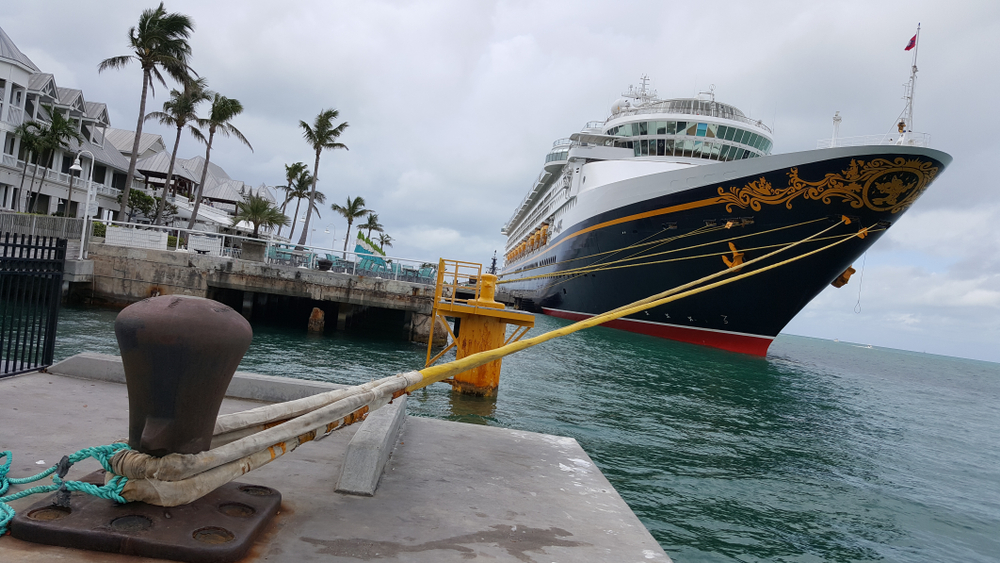All Aboard
For years, cruise ships were seen as floating condos for retirees—but in the past few years, the industry has begun to shed that image, with the average age of customers going down…and revenue going up. The industry is expected to make a whopping $30 billion in 2024.
But cruises go back much longer than most people realize—and have a surprisingly dark history.

The Grand Tour
Some of the earliest “cruises” go all the way back to the early 19th century, during the time of the “Grand Tour”—an educational tour of Europe, centered around Italy, considered a rite of passage for many upper-class young men from British or Northern European noble families.
When the practice began to wane in popularity due to the advent of rail travel and steam ships, which opened up new possibilities for destinations, a Sicilian company saw an opportunity—and it changed the tourism industry forever.
 Nathaniel Dance-Holland, Wikimedia Commons
Nathaniel Dance-Holland, Wikimedia Commons
The Francesco I
Waning popularity or not, the Grand Tour was still considered by many to be an essential and aspirational benchmark. In 1831, construction began on the Francesco I, and an advertising campaign followed soon afterward, offering a charter to nobility—and even royalty—who wanted to see the sights along the Mediterranean and Ionian seas.
And they weren’t just hitching a ride there—there would also be excursions and guided tours. Other companies couldn’t help but take notice.
The First Cruise Line
In 1844, P&O, a British shipping & logistics company, decided to expand operations and offer a passenger cruise experience to destinations in the Mediterranean. When it was a success, they became the world’s first cruise line in operation—and they still exist today.
P&O cruises were in high demand and they enjoyed a rapid expansion in the late 19th century, building bigger and more luxurious ships for their passengers. But they weren’t the only name in the game.
 Unknown Author, Wikimedia Commons
Unknown Author, Wikimedia Commons
Around The World In 300 Days
The first around-the-world cruise in history was offered by Culliford & Clarke, which planned to load the Ceylon with passengers for the 10-month, once-in-a-lifetime experience. But C&C faced a problem that still plagues cruise lines today: it’s just really expensive to operate cruise ships. Though their offer garnered a lot of attention, they ultimately couldn’t fill the boat with enough wealthy passengers to keep it in operation.
Four years later, they declared bankruptcy.
 Pierre-Julien Gilbert, CC BY-SA 2.0, Wikimedia Commons
Pierre-Julien Gilbert, CC BY-SA 2.0, Wikimedia Commons
The Prinzessin Victoria Luise
In the first few decades of cruises, most of the boats were pulling double-duty, operating as transport ships for passengers most of the year, and offering cruises in the off-season. The first purpose-built cruise ship was the Prinzessin Victoria Luise, which had all first-class cabins. It was built to match or surpass the amenities of Europe’s best hotels.
The Prinzessin Victoria Luise launched in 1900 to great fanfare. Sadly, she met a seriously dark end.
 Unknown author, Wikimedia Commons
Unknown author, Wikimedia Commons
An Innocent Mistake
While approaching the coast of Jamaica in 1906, the captain of the Prinzessin Victoria Luise, Captain H Brunswig, mistook one lighthouse for another. Unfortunately, this set him up for a catastrophic failure. To add insult to injury, a recent volcanic eruption had affected water levels in the area, and the nautical charts hadn’t been updated to reflect this.
When a crunch and shriek came up from under the water, Brunswig realized something was seriously wrong.
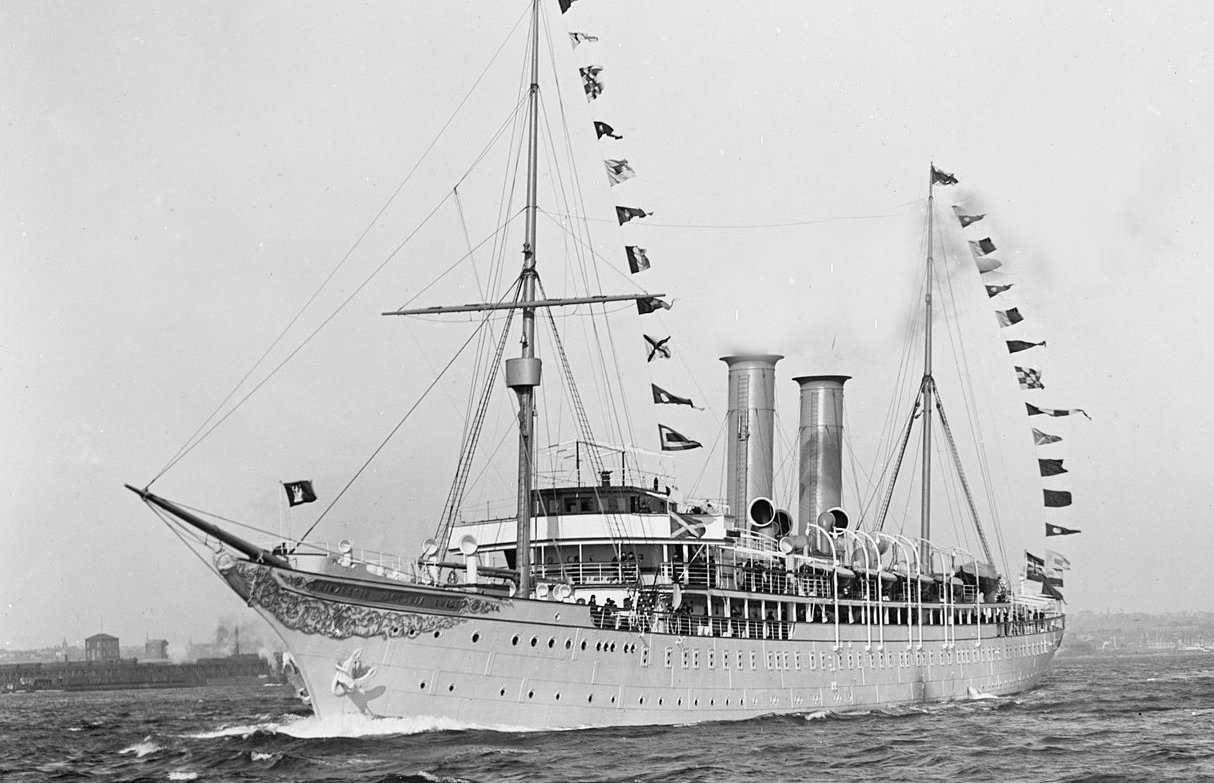 Detroit Publishing Company, Wikimedia Commons
Detroit Publishing Company, Wikimedia Commons
The End Of The Prinzessin Victoria Luise
The Prinzessin Victoria Luise had run aground on some coral. Brunswig did his best to run the engines to free her, but it didn’t work. The expensive cruise liner was done for. Dejected, he reported the incident, and then went to his cabin and took his own life. The passengers, unaware, were rescued the next day, and despite efforts to salvage the ship, it was eventually declared a total loss.
 Unknown author, Wikimedia Commons
Unknown author, Wikimedia Commons
A Twinned History
Cruising as a leisure activity made sense to those in a class that could afford it—it was a natural extension of the popularity of transatlantic ocean crossings, which reached a fever pitch at the turn of the 20th century. In fact, the popularity of cruises actually led ocean liners like the Titanic to step up their game in terms of luxury amenities.
Financially, splitting duties just made sense—but soon enough, the cruise industry faced an existential crisis.
 Unknown author, Wikimedia Commons
Unknown author, Wikimedia Commons
A Margin Of Error
From the very beginning, the cruise ship concept operated on a very thin profit margin, as the ships were wildly expensive to operate. This meant that the industry was incredibly fragile—and a series of events in the early 20th century would nearly metaphorically sink it. If that sounds like an omen…it is.
 Unknown author, Wikimedia Commons
Unknown author, Wikimedia Commons
Three Strikes
The first blow to public confidence in ocean travel was the sinking of the Titanic in 1912. A mere two years later, the outbreak of WWI meant that many ocean liners were at first under threat—and then requisitioned for service. One of these, the Lusitania, was torpedoed by a German U-boat and sank in 1915.
It was a horrible tragedy—but it wasn’t the only one that year.
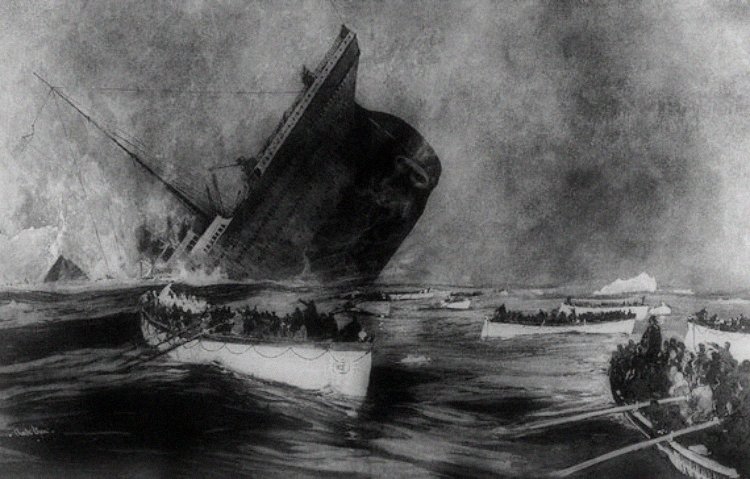 Charles Dixon, Wikimedia Commons
Charles Dixon, Wikimedia Commons
SS Eastland
After the sinking of the Titanic, laws in the US changed to require more lifeboats on passenger vessels. One of the boats affected by this was the passenger ship SS Eastland—but some believe it had disastrous consequences. The additional weight may have made the ship top-heavy, and during a charter in 1915, it began to list to port side before completely rolling over.
 Detroit Publishing Company, Wikimedia Commons
Detroit Publishing Company, Wikimedia Commons
A Terrible Tragedy
It was a cold morning, and many of the 2,500+ passengers on the SS Eastland had gone inside to warm up. They were trapped when the boat lurched over. Some were crushed, others drowned. Altogether, there were 848 casualties that day.
Interest in cruise ships definitely waned in the wake of such tragedies. But then, as the war ended and people began to financially recover, cruises once again became a lucrative option for leisure travel—but that’s not all they had to offer.
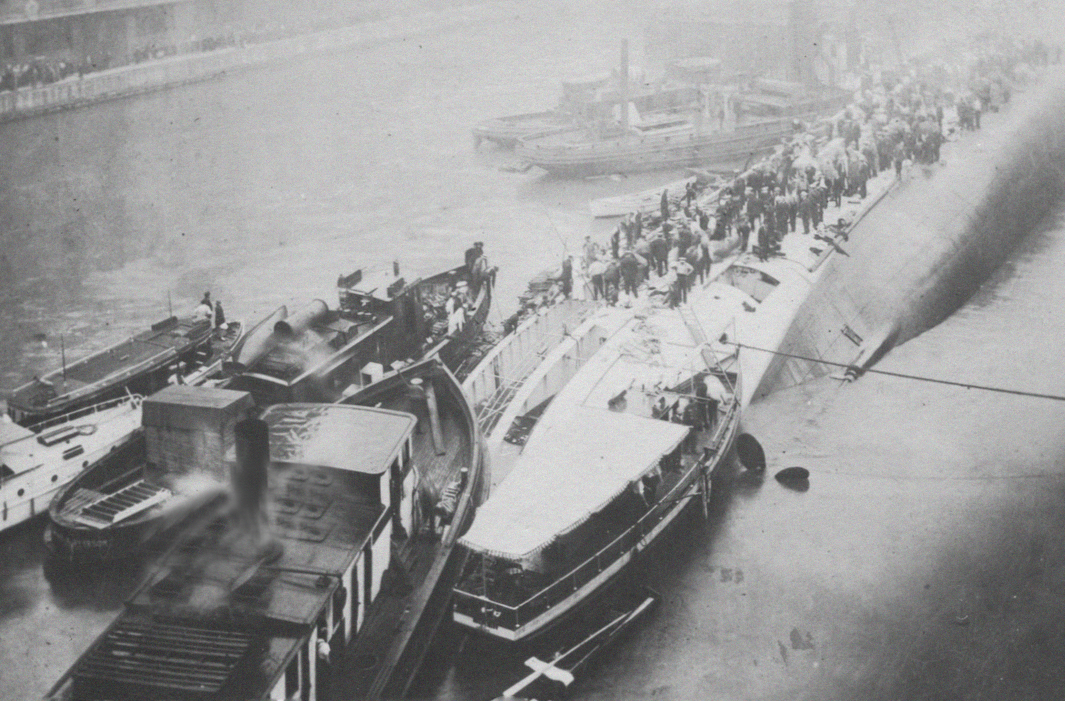 Unknown Author, Wikimedia Commons
Unknown Author, Wikimedia Commons
A Floating Speakeasy
Prohibition in the US came into effect in 1920—but there was an interesting catch. The laws only extended 3.1 nautical miles out into sea. Enter: the “booze cruise”. Suddenly, cruise ships were in demand off the coasts of the US, either to sail out those 3.1 miles and float, or to tour islands in the Atlantic.
One can only imagine the revelry onboard—but the good times didn’t last for long. Prohibition ended in 1933, and there was another looming threat on the horizon.
 U.S. National Archives and Records Administration, Picryl
U.S. National Archives and Records Administration, Picryl
The Propaganda Ship
For years, luxe British companies like Cunard or White Star had dominated the cruise industry, but by the 1930s, the biggest cruise line in the world was operated by the National Socialist Party of Germany…AKA, the Nazi Party. They requisitioned ocean liners and airships like the Hindenburg as part of their propaganda efforts.
They operated like a modern-day time-share selling session, inviting those from the lower and middle classes on board, where they then had all the time in the world to indoctrinate them. But then, of course, we all know what happened next.
The Next Generation
The practice of cruising essentially came to a halt during WWII—and in the aftermath, travel looked very different. As cars became more comfortable, affordable, and safer in the post-war era, there was a boom in road trips. Then, the same thing happened with plane travel—and all of a sudden, ocean travel faced an existential crisis.
Transatlantic trips were basically off the table, and the industry was in deep trouble. It could’ve spelled doom for the cruise experience—but instead, it was their time to shine.
A New Audience
The first cruise ships were meant to give a first class experience to first class passengers—but with a growing middle class in the USA, cruise lines expanded their options to cater to new customers. Lines that still exist today like Princess, Norwegian, Royal Caribbean, and Carnival were established throughout the 70s and 80s. These offered fresh new experiences to passengers, like on-board entertainment, cabarets, and casinos.
Still, the industry was dangerously teetering between success and failure—and its turnaround came from the strangest source.
 Tony Garner, CC BY-SA 4.0, Wikimedia Commons
Tony Garner, CC BY-SA 4.0, Wikimedia Commons
Love, Exciting New—Come Aboard, We’re Expecting You
What took the cruise industry into its golden era? Well, that would be The Love Boat. Yes, the romantic comedy-drama TV series that ran from 1977-1986 is often cited as one of the major contributing factors for the rise in popularity of cruise ships. And the effects speak for themselves—but there were still some bumps in the road.
The SS America
The SS America was christened by then First Lady Eleanor Roosevelt in 1939, when it was the largest, fastest, and most luxurious American-built passenger liner out there. Of course, ships, like all other things, age. Venture Cruise Lines—one of the many lines that popped up in the 70s—saw an opportunity to set themselves apart from the competition.
Of course, it would be the customer who paid the price for their gamble.
 Naval History & Heritage Command, Wikimedia Commons
Naval History & Heritage Command, Wikimedia Commons
Quantity Over Quality
Venture bought the aging America for $5 million and sank $2 million into it for repairs. Their plan? To offer cut rates for a cruise leaving from New York and fill the ship to its 2,220-capacity gills to make a profit. For just $135 for two nights, passengers would have access to pools, a casino, a disco, a salon, a sauna, nightclub shows, and six (!) meals a day.
As you can imagine, it was a promise they couldn’t quite fulfill.
 Naval History & Heritage Command, Wikimedia Commons
Naval History & Heritage Command, Wikimedia Commons
(Un)Welcome Aboard
After initially setting sail on June 30, 1978, the SS America stopped in New York to pick up some 900 passengers. Some had never received the tickets they’d paid for. Others had their tickets, but they weren’t on the manifest. Finally, one frustrated crew member just told everyone to get on with or without them.
When they got on board, things only got worse.
 Wusel007, CC BY-SA 3.0, Wikimedia Commons
Wusel007, CC BY-SA 3.0, Wikimedia Commons
An Unpleasant Surprise
Passengers expected a luxury cruise—but their experience on board the SS America quickly turned into what can only be described as the Fyre Festival at sea. Cabins were flooded, and linens and mattresses were missing. There were cockroaches, rats, and indescribable odors from the kitchens and the plumbing.
 Alcanizero, CC BY-SA 4.0, Wikimedia Commons
Alcanizero, CC BY-SA 4.0, Wikimedia Commons
The “Amenities”
The minimum wage crew that Venture had scraped together were still doing a slapdash job of painting the boat mere hours before people boarded it. The disco, sauna, and salon never came to fruition. And structurally, the ship was borderline unsafe. There were holes, rust, and leaking pipes.
 Drbdlynch, CC BY-SA 3.0, Wikimedia Commons
Drbdlynch, CC BY-SA 3.0, Wikimedia Commons
A Floating Biohazard
Left with little to no resources, the crew did the best they could—and the best they could was quite gross. Instead of washing the dishes, they simply wiped them with a towel. As the crew attempted to ready the ship, they filled hundreds of garbage bags—but had nowhere to put them, so they filled the pool with them. All things considered, it’s no surprise what happened next.
 Unknown Author, Wikimedia Commons
Unknown Author, Wikimedia Commons
Mutiny On The SS America
With the ticket problems and people scrambling for beds, some 100 guests were left without cabins. And cheap tickets or not, they weren’t going to take it anymore. Guests began to clamor to return to shore and started trying to fight the crew. Finally, the captain had no choice. Representatives of Venture promised them limousine rides home.
Instead, 250 passengers exited the ship on rope ladders off the coast of Coney Island, got onto tugboats, and were unceremoniously dumped at Staten Island around 3 AM on July 2, 1978. But somehow, that wasn’t the end of the SS America.
 Irving Underhill, Wikimedia Commons
Irving Underhill, Wikimedia Commons
“We Goofed”
Faced with the story of the so-called mutiny, a spokesperson for Venture simply said, “We goofed”. Then, taking the maxim of “There’s no such thing as bad publicity” a bit too seriously, the SS America loaded back up the next day and set off for a five-day cruise to Nova Scotia. It sustained serious structural damage and leaks and barely made it there.
When it pulled into port, health inspectors couldn’t board the ship due to the wave of fleeing passengers, who made $2.5 million in claims against Venture.
 Bengt Nyman, CC BY 2.0, Wikimedia Commons
Bengt Nyman, CC BY 2.0, Wikimedia Commons
A Turning Point
Unsurprisingly, all further journeys were canceled and the ship was impounded. As the story of the SS America proved, cruise lines could no longer just repurpose old ocean liners. They had to build boats to accommodate not just their passengers, but also provide all the newest amenities. Enter: the megaship.
The Megaship Era
In 1987, the cruise industry changed forever with the unveiling of the first megaship, Royal Caribbean’s MS Sovereign of the Seas. It could accommodate 3,000 passengers, offering them five restaurants, nine bars, a spa, four pools, and a casino.
The addition of balconies also became a surprising factor in its success, and all ships since have included them, leading to the reputation of such megaships as “floating condominiums”.
 Piergiuliano Chesi, CC BY 3.0, Wikimedia Commons
Piergiuliano Chesi, CC BY 3.0, Wikimedia Commons
The March Of Progress
The Sovereign class was a runaway hit—and its success drove a fierce and cutthroat race to one-up what came before. A number of competing classes arrived in the 1990s, only to be outdone in the 2000s by ships like the Queen Mary 2, which itself was then outdone by Royal Caribbean’s Freedom and Oasis classes.
Since the 80s, ships have grown a third longer, are twice as wide, and have tripled their capacity to 7,000+ guests. The megaship era is clearly here to stay—but it’s come with a serious dark side.
 Trondheim Havn, CC BY-SA 2.0, Wikimedia Commons
Trondheim Havn, CC BY-SA 2.0, Wikimedia Commons
The Truth About Megaships
As mentioned earlier, one of the major problems facing the cruise ship industry is the low profit margin—or least, it was a major problem for most of the 20th century. As cruise lines entered the megaship era, they also wanted to juice profits, and so, they found ways to cut corners.
One of these methods was to elide labor laws and safety and environmental regulations—and the way they did it was absolutely infuriating.
 Ian Barbour, CC BY-SA 2.0, Wikimedia Commons
Ian Barbour, CC BY-SA 2.0, Wikimedia Commons
American-Made, American-Operated—But No American Flag
Despite the fact that many cruise lines are headquartered in the US or other wealthy countries, many choose to register their ships in foreign countries in order to circumvent local regulations around labor, taxes, and environmental standards.
For example, Carnival’s ships are registered in Panama, and Royal Caribbean’s in Liberia—a country which still made $20 million a year in registration fees alone despite an ongoing civil war. What does this mean for employees?
 Oceanhistory, CC BY-SA 4.0, Wikimedia Commons
Oceanhistory, CC BY-SA 4.0, Wikimedia Commons
Life On The Crew
For many years, cruise ship employees worked 70 or 80 hour weeks with no days off for months at a time, with some earning as little as 50 cents an hour. As you can imagine, the turnover was high. In the 1990s, representatives tried to introduce legislation to extend US labor laws to cruise ships that sailed from American ports.
Industry lobbyists fought hard against it and won, with claims they boosted the US economy and created jobs. And the human toll isn’t just confined to employees.
 D. R. Walker, CC BY-SA 3.0, Wikimedia Commons
D. R. Walker, CC BY-SA 3.0, Wikimedia Commons
The Port Problem
An integral part of the cruise ship experience is the opportunity for passengers to stop in multiple ports they might not otherwise visit. This offers the ports in question a chance to rake in tourist dollars—but it also makes life for residents a living nightmare. In places like Venice, Barcelona, and Dubrovnik, cruise ships have contributed to overtourism.
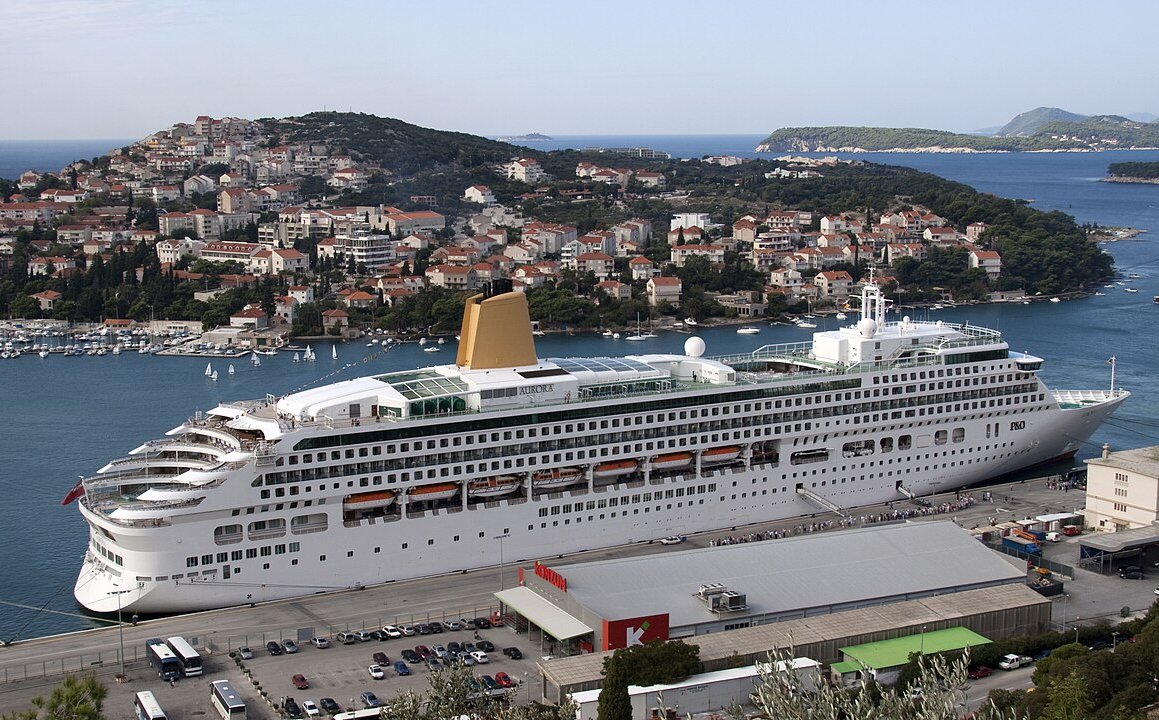 Tony Hisgett, CC BY 2.0, Wikimedia Commons
Tony Hisgett, CC BY 2.0, Wikimedia Commons
The Consequences Of Overtourism
What happens when thousands of people stream into a port city for a few hours and leave? The cruise lines may claim it contributes to the economy, but the numbers don’t lie. In Venice, for example, cruise tourists accounted for 73% of visitors, but only contributed to 18% of the tourism economy.
 Publicstock, CC BY-SA 3.0, Wikimedia Commons
Publicstock, CC BY-SA 3.0, Wikimedia Commons
More Consequences Of Overtourism
Experts claim that cruise tourists cause overcrowding, damage to historical sites, and essentially are responsible for a form of gentrification, where neighborhoods begin to cater to tourists rather than locals. And the cities have begun to fight back—with some, including Venice and Bar Harbor, Maine, limiting the number of passengers who can disembark.
This is just one part of a larger problem in the industry—one which will eventually take its toll worldwide.
 Hnapel, CC BY-SA 4.0, Wikimedia Commons
Hnapel, CC BY-SA 4.0, Wikimedia Commons
The Environmental Cost
With tens of millions of passengers boarding cruise ships each year, it’s hard to overstate the environmental toll that the industry has on the world. Beyond the simple fuel emissions from the ships themselves, there’s the toll from the fuel needed to get passengers to the ships. And that’s not all.
The Wastewater Problem
What happens when 664,602 people (the combined capacity of the 302 cruise ships operating worldwide) spend days on end at sea eating and drinking—and doing the things that follow eating and drinking? A whole lot of wastewater is produced, that’s what. And where does it all go? Straight into the ocean below. If not properly treated, the consequences on marine life can be catastrophic.
How Much Waste Can One Ship Make?
It’s estimated that a cruise ship holding 3,000 passengers will produce 55,000 to 110,000 liters of blackwater (human waste water) a day, and 330,000 to 960,000 liters of greywater (water from doing dishes, showers, laundry, and sink drains) a day. The costs to the environment are staggering—but there are also dangers faced by ordinary passengers.
The Seabourn Spirit
While attacks by pirates are rare, they’re not unheard of. In 2005, a small cruise ship, the Seabourn Spirit, was attacked off the coast of Somalia by pirates and fired on with machine guns. Quickly, the crew worked to protect the passengers, with the master-at-arms deploying an acoustic device that emitted a powerful sound wave. Incredibly, it worked. But they weren’t the only case of a cruise ship under attack.
 Greg O'Beirne, CC BY-SA 3.0, Wikimedia Commons
Greg O'Beirne, CC BY-SA 3.0, Wikimedia Commons
The MSC Melody
Another ship, the MSC Melody, saw passengers throwing deck furniture at pirates in a speedboat before security was able to address the problem and escape the attempt. Even if pirates don’t actively attack a ship, some precautions may have to be taken—like in the case of the Sea Princess, which, in 2017, had mandated blackouts every night from dusk till dawn for 10 days.
As mentioned, the threat of piracy is a small one. Another unlikely—yet not impossible—threat? The ship sinking.
 Bahnfrend, CC BY-SA 3.0, Wikimedia Commons
Bahnfrend, CC BY-SA 3.0, Wikimedia Commons
Costa Concordia
In recent history, it’s nearly unheard of for a cruise ship to sink—let alone for there to be casualties. However, there’s always an exception to the rule, and in this example, it’s the Costa Concordia. The ship, which was the first in her class, with a capacity of 3,780 passengers, took its maiden voyage in 2006. The $570 million ship had a relatively unremarkable career—until one day in 2012.
 Robert Lender, CC BY-SA 2.0, Wikimedia Commons
Robert Lender, CC BY-SA 2.0, Wikimedia Commons
Sail-By Salute Gone Wrong
Just hours after embarking on the first leg of a cruise around the Mediterranean, the Costa Concordia diverted from its planned route to make a sail-by salute near Isola del Giglio, Tuscany. That’s when disaster struck. The ship hit a rock, leaving a gash in the port-side hull. The power went out, and the ship, unable to move forward, took on water and began to list.
 Rvongher, CC BY-SA 3.0, Wikimedia Commons
Rvongher, CC BY-SA 3.0, Wikimedia Commons
The Sinking Of The Costa Concordia
Strong winds blew the ship aground, at which point the Concordia was resting on her starboard side. Though it was gradually sinking, the waters were relatively calm—making for a simple rescue operation. There was just one problem. No evacuation order had been made.
 Rvongher, CC BY-SA 3.0, Wikimedia Commons
Rvongher, CC BY-SA 3.0, Wikimedia Commons
Too Little, Too Late
It took Costa Concordia’s Captain Francesco Schettino one full hour after impact to make the evacuation order. And then things got worse. Maritime law states that after an abandon ship order, passengers must be evacuated within 30 minutes. When the Costa Concordia sank, it took a whopping six hours to evacuate the sinking ship. The consequences were deadly.
 Rvongher, CC BY-SA 3.0, Wikimedia Commons
Rvongher, CC BY-SA 3.0, Wikimedia Commons
Abandon Ship
Of 3,206 passengers and 1,023 crew members, there were 32 fatalities from the sinking of the Costa Concordia, making it one of the worst cruise ship disasters of the century—but that’s not the most infuriating part. Captain Schettino left the ship while there were still 300 people on board, abandoning his post.
As a result, he was charged with manslaughter, causing a maritime accident, and abandoning ship. He was later sentenced to 16 years in prison.
The Crime Problem
Though sinking is rare, one of the most pervasive problems aboard cruise ships is crime. Modern cruise ships have security systems for passengers boarding that rival those at airports, including metal detectors and X-ray machines. Additionally, most lines use ID systems for passengers.
But still, theft, intimate violence, assaults, and even disappearances present a problem—and the cruise lines themselves play a part in this.
 Isjc99, CC BY-SA 3.0, Wikimedia Commons
Isjc99, CC BY-SA 3.0, Wikimedia Commons
Underreported Issues
Most crimes that took place on board cruise ships were underreported, and cruise lines did not make data about the problem available to the public. In 2010, the US passed the Cruise Vessel Security and Safety Act in order to require cruise lines to report all deaths, missing people, allegations of crimes, and complaints regarding theft, harassment, and assault.
What has been reported since is shocking—like the statistic that, in 2016, 70% percent of alleged crimes on cruise ships were intimate assaults.
Disney Cruises
One runaway success of the megaship era is the Disney Cruise Line. Though it joined the game much later than the big stars of the 70s and 80s, it’s grown its market share considerably and two of its Wish class ships round out the list of the largest cruise ships currently in service, with three more ships expected to join the fleet.
And, like the other cruise lines mentioned, the Disney Cruise Line hasn’t been without its own scandal.
 Tony Hisgett, CC BY 2.0, Wikimedia Commons
Tony Hisgett, CC BY 2.0, Wikimedia Commons
Rebecca Coriam
Rebecca Coriam was 23 years old and an accomplished sports coach and youth worker from England when she got a job with Disney in June of 2010. She joined the crew of Disney Cruise Line’s Bahama fleet for four months before transferring to the Disney Wonder. She was working on the Wonder when, on March 21, 2011, she disappeared.
 Jacrews7, CC BY 2.0, Wikimedia Commons
Jacrews7, CC BY 2.0, Wikimedia Commons
The Last Sighting
Coriam was last seen on CCTV speaking on the phone to someone and appearing distressed at around 5:45am that morning. She did not show up for her shift at 9 am, and when paged over the intercom, did not answer. After the crew searched the ship, the US Coast Guard and Mexican Navy searched the international waters the ship had sailed through in the interim.
Next, a detective from the Royal Bahamas Police Force joined the investigation onboard. But the more they looked, the less they found.
 Sergey Yarmolyuk, CC BY-SA 3.0, Wikimedia Commons
Sergey Yarmolyuk, CC BY-SA 3.0, Wikimedia Commons
The Stories Didn’t Add Up
While some reports claimed the detective investigated over a period of days, he told Rebecca’s parents, Annmaria and Mike, he only worked for one day. The Coriams flew to meet the ship at port in Los Angeles—but they found the experience seriously unsettling.
No Answers
The Coriams said that Disney had them picked up in a car with blacked out windows, and only allowed them on the ship through a discreet side entrance, after all the passengers had left. When they met with the captain, he presented them with his theory that she’d been washed overboard by a wave while swimming in the crew pool…which had high walls surrounding it.
The investigation continued, but the Coriams weren’t getting any satisfying answers about their daughter.
The “Lost At Sea” Article
Journalist Jon Ronson, with the permission of Rebecca’s family, booked a trip on the Wonder along the same route and did his best to perform his own investigation, speaking to crew, all of whom wished to remain anonymous. The most prevalent story actually backed up the captain’s tale, with one crew even saying the company had put out flowers the next day at the pool.
Ronson remained unconvinced, but his article did result in more interest in the case.
 Gage Skidmore, CC BY-SA 2.0, Wikimedia Commons
Gage Skidmore, CC BY-SA 2.0, Wikimedia Commons
The “Rogue Wave”
The “rogue wave” theory was the one most-repeated by the anonymous crew members, and Disney provided the Coriams with a pair of flip-flops found by the pool that they claimed were Rebecca’s. However, they were too small and had another crew member’s name on them. One investigator studied the records of the water from that time and found no reports of rough waters.
A Mickey Mouse Operation
As time passed, the Coriams grew increasingly frustrated with constantly hearing that the investigation was ongoing, and many pointed the blame at the Bahamian police. Cruise industry watchdogs have claimed that ships, especially Disney ships, have so many security cameras that there’s no way she could’ve been swept overboard without footage of it, and that whatever happened, they think Disney knows and has covered it up.
 Cardei012597, CC BY-SA 4.0, Wikimedia Commons
Cardei012597, CC BY-SA 4.0, Wikimedia Commons
The Settlement
In the US, the Coriam family settled with Disney out of court for an undisclosed amount, though officials in the UK have still pushed for the inquest to continue. Many British officials have criticized Disney’s silence on the subject and accused them of blocking any investigation.
And it’s a problem that continues to plague the industry.
Man Overboard
One of the most disturbing dangers on a cruise ship is one that can’t really be identified at all. In the past 20 years, over 200 people have gone missing from cruise ships, and the nature of these disappearances means we don’t really know why they happen—whether it’s by choice, by accident, or as a result of foul play.
One maritime lawyer estimates that nearly half are a result of foul play—just another of the cruise industry’s dark and tightly-held secrets.













